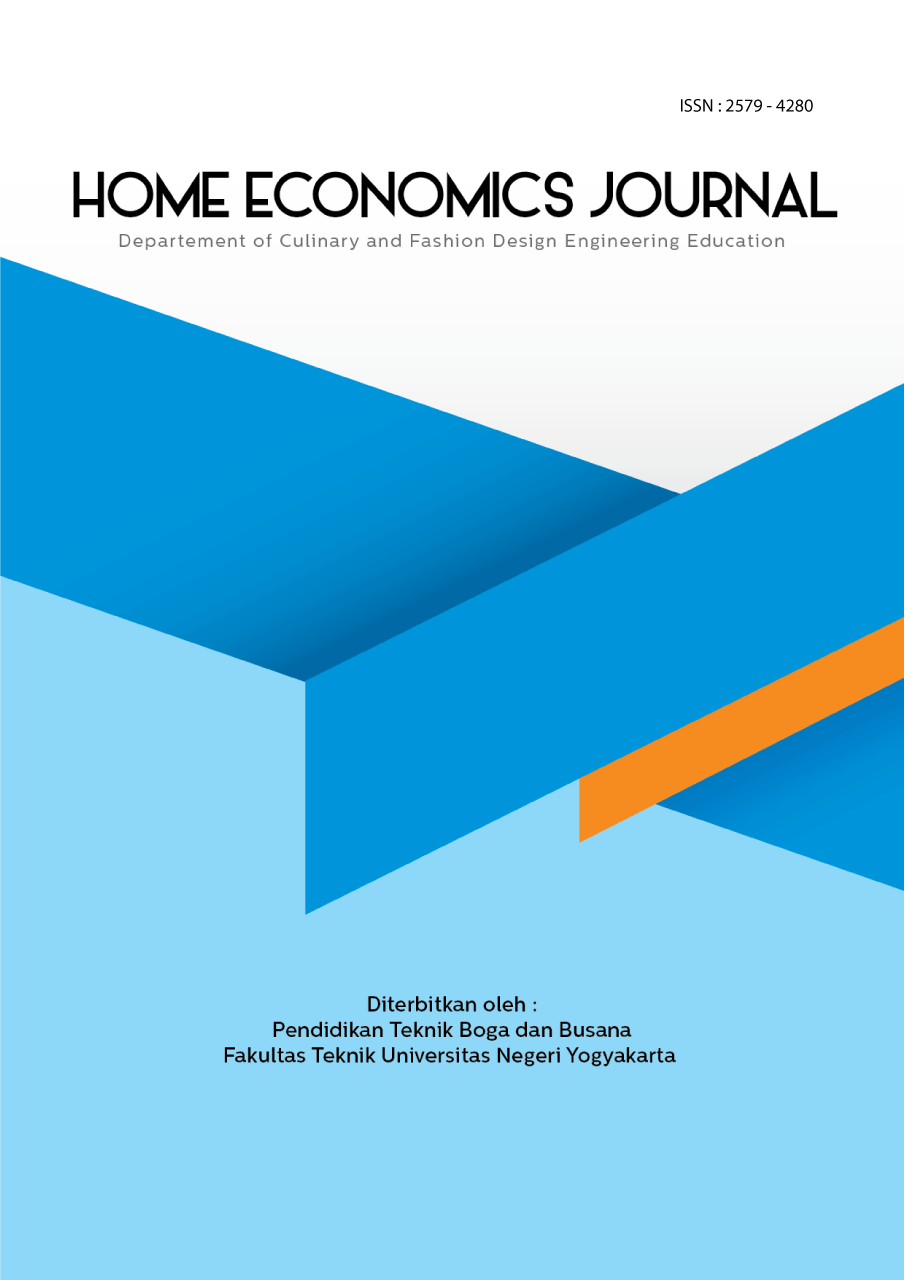STORY OF PALAH TEMPLE IN EAST JAVA BATIK VISUALIZATION
DOI:
https://doi.org/10.21831/hej.v9i1.74238Keywords:
Batik, East Java, Hand Drawn Batik, Palah Temple, Penataran TempleAbstract
Folktales are stories that are told for generations among the people of a region or country. Folklore often serves as a means to convey cultural values, morals, and traditional knowledge from one generation to the next. The purpose of this research is to describe the process of designing batik motifs using the idea of the Palah Temple story as an alternative to East Javanese batik. The research method uses the Double Diamond Model design research method. The Double Diamond Model consists of four stages: Discover, Define, Develop, and Deliver. In the initial stage, the design direction of the batik motif was determined by exploring sources of ideas to be used as a mood board. In the second stage, the researcher develops the moodboard by stylizing the motif development. The third stage is preparing the stylization of the batik motif development by preparing the motif composition. This research has yielded two themes and six developments of batik motifs. The fourth stage involves selecting the best motif to be realized as a long batik cloth prototype, measuring 250 x 115 cm, with the theme "Guardians of God's Wealth." The creation of the Temple Palah story in East Java batik visualization enriches the diversity of East Java batik motifs.
References
[1] Erfinawati, E. “Tema dan amanat Cerita Rakyat Tripa Makmur Kabupaten Nagan Raya”. Serambi
Konstruktivis, 1(3), 2019.
[2] Santiko, H, “Candi Panataran: Candi Kerajaan Masa Majapahit. Kalpataru,” 21(1), 20-29, 2012.
[3] Murwonugroho, W. and Miftakhudin, M. “Kajian Rupabheda: Tokoh-Tokoh Sri Tanjung pada
Relief Candi Penataran”. Panggung, 30(2), 2020.
[4] Firmansyah, M. A and Mahardhika, B. W, “Pengaruh Strategi Marketing Mix (Produk, Harga, Promosi Dan Distribusi) Terhadap Keputusan Pembelian Konsumen Batik di Surabaya”. BALANCE: Economic, Business, Management and Accounting Journal, 12(02), 2015.
[5] Jatmiko, F. P, “Visualisasi Relief Medalion Bangunan Candi Penataran Sebagai Sumber Ide Penciptaan Motif Batik Busana Kasual Pop”. Doctoral dissertation, Institut Seni Indonesia Yogyakarta, 2021.
[6] Rahayu, Yulia Fitriani. "Ornamen Candi Penataran Blitar Sebagai Ide Dasar Penciptaan Motif Batik Tulis Busana Pesta Wanita." Pend. Seni Kerajinan-S1 (e-Craft) 6.1 (2017): 38-50.
[7] Wulandari, A., Batik Nusantara: Makna filosofis, cara pembuatan, dan industri batik. Penerbit Andi, 2022.
[8] Marta, M., Karnadi, H., and Renaningtyas, L, “Perancangan motif batik kontemporer yang terinspirasi kesenian Reog Ponorogo”. Jurnal DKV Adiwarna, 1(12), 11, 2018.
[9] Anshori, Yusak, and Adi Kusrianto, “Keeksotisan batik jawa timur”. PT. Elek Media
Komputindo–2011-ISBN: 978-602-00-1195-0, 2011.
[10] Ledbury, J, “Design and product development in highperformance apparel”. In High- Performance Apparel (pp. 175-189). Woodhead Publishing, 2018.
[11] Alexandra, S. C., and Wiana, W. “Amphitrite as a Source of Ideas for Party Dress With Beads Embroidery”. Home Economics Journal, 9 (1), 2025.
[12] Nur'Afifah, O. dan Wahyuningsih, U, “Penerapan motif lembuswana Dengan Teknik lekapan 3 Dimensi Pada Cape”. Prosiding Pendidikan Teknik Boga Busana, 16(1), 2021.
[13] Atmy, Y. “Dampak Pemanfaatan Candi Panataran di Bidang Agama, Kebudayaan, dan Pariwisata: Kajian Dampak Terhadap Fisik Dan Nonfisik Candi Panataran”. Tumotowa, 4(1), 45- 60, 2021.
[14] Anindita, Marsha, and Menul Teguh Riyanti. "Tren flat design dalam desain komunikasi visual." Jurnal Dimensi DKV: Seni Rupa dan Desain 1, no. 1 (2016): 1-14.
[15] Kumalasanti, Rosalia Arum, and Erfanti Fatkhiyah. "Identifikasi Isen-Isen Cecek Pada Kain Batik Menggunakan Jaringan Syaraf Tiruan Backpropagation." (2018).
[16] Maknun, L. K.”Perancangan Batik Dengan Sumber Inspirasi Cerita Rakyat Dan Flora Fauna Indonesia”. Ornamen, 15(2), (2018).
Downloads
Published
How to Cite
Issue
Section
Citation Check
License
Copyright (c) 2025 Talisa Fasya Laksita Putri, Indarti indarti

This work is licensed under a Creative Commons Attribution-ShareAlike 4.0 International License.









